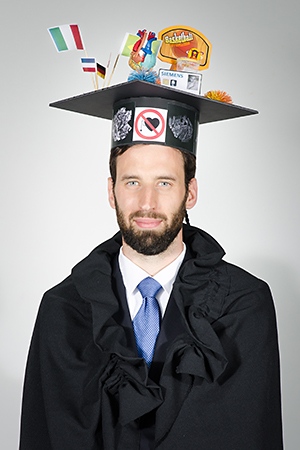Davide Piccini
Respiratory Self-Navigation for Whole-Heart Coronary Magnetic Resonance Imaging
Abstract
As the average life span of the world population increases, cardiovascular diseases firmly establish themselves as the most frequent cause of death in many of the developed countries. Coronary artery disease (CAD) is responsible for more than half of these cases and there is, hence, a strong need for a non-invasive and radiation-free test that could be reliably adopted for its assessment in clinical routine. Although coronary magnetic resonance imaging (MRI) has always been regarded with high expectations, it is still not considered for clinical assessment of CAD. This is mainly due to several limitations of current coronary MRI examinations. The complex anatomy of the coronary arteries requires extensive scout-scanning to precisely plan the actual data acquisition. The current speed limitations of the MRI scanners and the contribution of cardiac and respiratory motion do not allow the high resolution acquisitions to be performed within the fraction of a single heartbeat. Consequently, data acquisition must be split into multiple heartbeats and usually performed during free-breathing. At the same time, gating with respect to a consistent respiratory position is applied using an interleaved navigated scan which monitors the position of the subject’s diaphragm. Major improvements in standard navigator-gated free-breathing coronary MRI have been achieved in recent years, but a number of important intrinsic limitations, such as the prolonged and unknown acquisition times, the non-linearity of the motion compensation, and the complexity of the examination setup have so far hindered the clinical usage of this technique. In contrast, a technique known as self-navigation, which performs motion detection and correction solely based on imaging data of the heart, promises a priori knowledge of the duration of the acquisition with improved accuracy of the motion compensation and requires minimal expertise for the planning of the examination. In this work, a novel acquisition and motion correction strategy for free-breathing selfnavigated whole-heart coronary MRA was introduced, analyzed and implemented to be entirely integrated in a clinical MR scanner. The proposed acquisition method consists of a novel interleaved 3D radial trajectory, mathematically constructed on the basis of a spiral phyllotaxis pattern, which intrinsically minimizes the eddy currents artifacts of the balanced steady state free-precessing acquisition, while ensuring a complete and uniform coverage of k-space. The self-navigated respiratory motion detection is performed on imaging readouts oriented along the superior-inferior axes and is based on a method for the isolation and automatic segmentation of the bright signal of the blood pool. Motion detection of the segmented blood pool is then performed using a cross-correlation technique. This fully automated respiratory selfnavigated method offers an easy and robust solution for coronary MR imaging that can also be integrated into a regular clinical routine examination. The technique was tested in volunteers, compared to the standard navigator-gating approach, and, for the first time to the author’s knowledge, allowed self-navigation to be positively applied to a large patient study in an advanced clinical setting.
